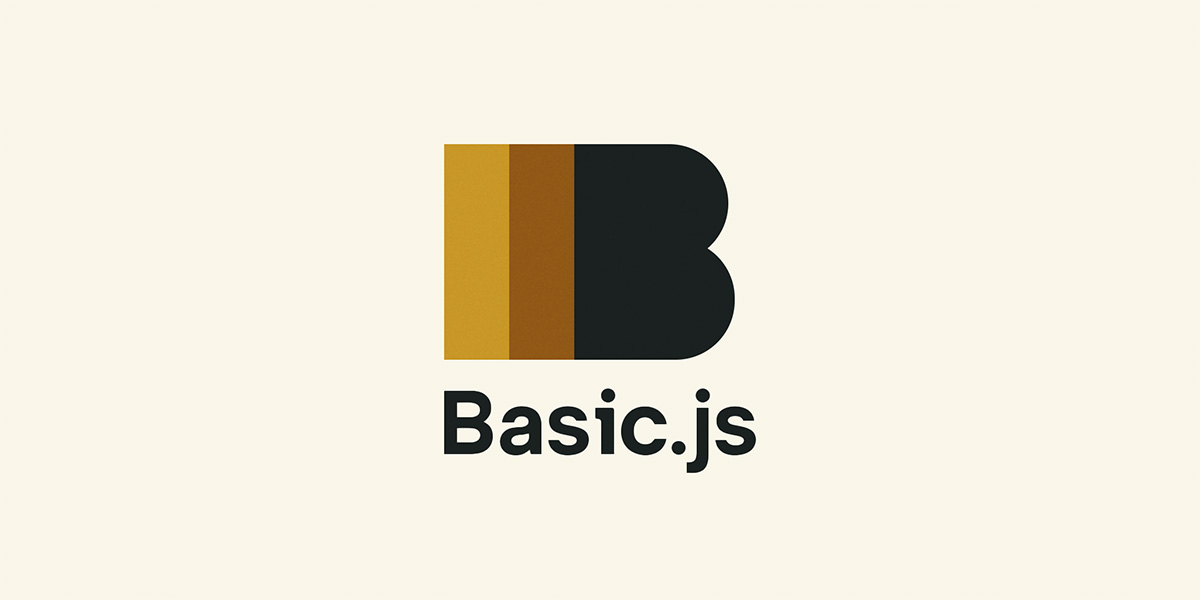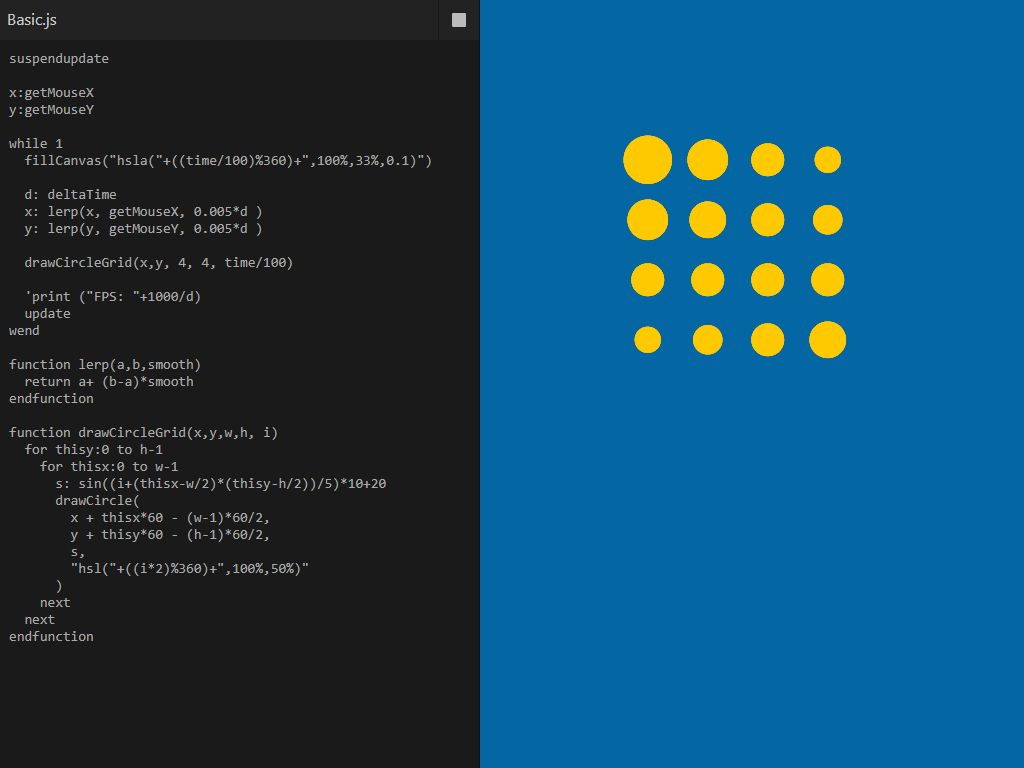
Basic.js
Basic.js is a modernized implementation of the BASIC programming language for JavaScript. It is comprised of three major parts: the lexer, the parser, and the BASIN runtime which is its own separate project used in several of my domain-specific languages.
GitHub Repo: https://github.com/DanFessler/basic.js
Motivation
My first programming language was BASIC which I taught myself through a software released by Interplay called Learn to Program Basic in 1998. My nostalgia for BASIC and interest in interpreters led me to make my own implementation.
Originally it was intended to be a faithful implementation of Interplay’s version, however, as the project progressed, it turned into my own modern flavor. Notable differences include:
- Assignment via “
:” Operator - Functions (with hoisting)
- Language Plugins
Example program
for i: 1 to 100
if i % 15 = 0
print "FizzBuzz"
elseif i % 5 = 0
print "Buzz"
elseif i % 3 = 0
print "Fizz"
else
print i
endif
nextUsage
Install directly from the GitHub repo:
npm i https://github.com/DanFessler/basic.jsThen import the package, import any necessary library plugins, and run your program.
import basic from "jsbasic";
basic.import({
newFunction: () => console.log("this is an example plugin function"),
});
basic.run(`print "Hello World!"`);Lexer
I wrote a custom Lexer for Basic.js which was very simple, only ~150 lines. At a high level, it follows these steps:
- Reads through the program character by character, adding to the current token lexeme until it no longer matches a rule or reaches the end of the program
- Determines the type for the token based on matching its lexeme to a list of keywords, operators, or literals.
- If there was no matching rule or the type wasn’t determined, throw a Syntax Error
Parser
Rather than using a parser generator or other context-free grammar solution, the parser was also written from scratch for Basic.js. This was an educational project after all.
At its core it’s a Recursive Descent Parser, with some notable differences:
- Two-Tier Parsing
Statements are parsed via Keyword Parsers which are defined in a lookup table making them more modular and easy to extend the language. If no keyword parser is found, then it will try to parse it as an expression - Precedence-Based Expressions
Instead of using recursive descent for expressions, I opted for precedence climbing algorithm which is simpler to reason about
Plugins
Plugins to extend the language with additional libraries can be imported with basic.import() which are then accessible to Basic.js through regular function calls. A plugin is provided as a lookup table of named functions.
Below is an example plugin which adds canvas drawing and mouse input functions. This particular example is instantiated from a class as it needs to track internal state.
export default class Plugin {
constructor(canvasID) {
this.canvas = document.getElementById(canvasID);
this.ctx = this.canvas.getContext("2d");
this.mouseState = {
x: 0,
y: 0,
button: 0,
};
window.onmousemove = (e) => {
let rect = this.canvas.getBoundingClientRect();
this.mouseState.x = e.clientX - rect.left;
this.mouseState.y = e.clientY - rect.top;
};
this.canvas.onmousedown = (e) => {
this.mouseState.button = e.buttons;
};
this.canvas.onmouseup = (e) => {
this.mouseState.button = e.buttons;
};
}
getFunctions() {
return {
drawCircle: (x, y, r, color) => {
this.ctx.fillStyle = color;
this.ctx.beginPath();
this.ctx.arc(x, y, r, 0, 360);
this.ctx.fill();
},
fillCanvas: (color) => {
this.ctx.fillStyle = color;
this.ctx.fillRect(0, 0, this.canvas.width, this.canvas.height);
},
clearCanvas: () => {
this.ctx.clearRect(0, 0, this.canvas.width, this.canvas.height);
},
getMouseX: () => {
return this.mouseState.x;
},
getMouseY: () => {
return this.mouseState.y;
},
getMouseButton: () => {
return this.mouseState.button;
},
};
}
}Live Demo
I put together a playground which extends the language with canvas drawing operations and a few other features. The default program draws an animated grid of circles that follows the mouse cursor.
- Live Demo: https://basicjs.netlify.app/
- Playground Repo: https://github.com/DanFessler/basic-react/
